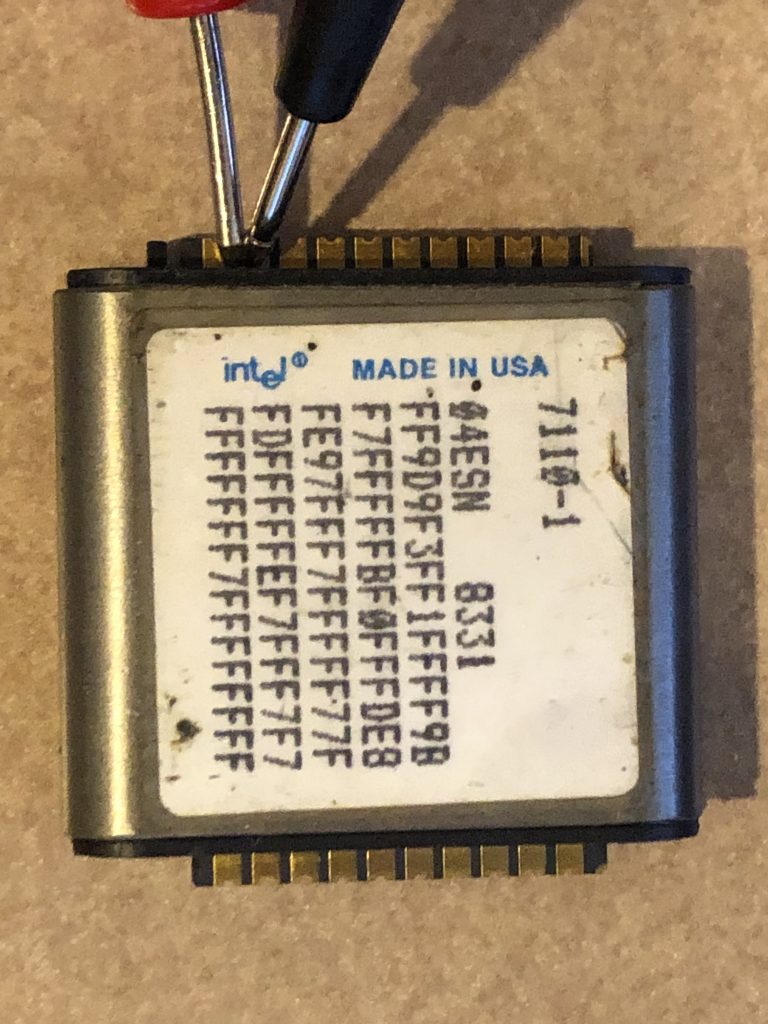Curious about the condition of bubbles that I have seen available for sale, I decided to take the plunge and buy a few of the reasonably priced bubbles to get an idea of the risk level of buying used bubbles. I purchased some that were loose Intel 7110 bubbles, with the typical ‘working, removed from service’ which of course means nothing since it is doubtful the seller knows their history, doubtful they were tested, and doubtful the seller knows if they are working. Of the three of these I purchased from different sellers, one worked, one was completely dead, and one had its boot loop erased. I have not reseeded and restored the boot loop on #3 so the jury is still out. On subsequent reads the boot loop gives different results, so the chances of that one actually being good are slim since the boot loop should always be consistent even if it is wrong. The one that was completely dead did not even ohm out properly. I can not imagine what it takes to completely destroy a bubble, perhaps it had a manufacturing defect and has been sitting in a junk pile ever since.
If interested, there is a bubble pin-to-pin ohm testing table in the SBC-85 1-Mbit Bubble Memory User’s Manual.
So for loose, ‘removed from service’ 7110s, the success rate was not good to say the least.
I have had better luck with bubbles that were still mounted to a circuit board. I have purchased 4 of those which I removed from their boards, did a resistance check, and installed in the SBC-85 bubble board. I am happy to report that all worked including boot loops and seed bubbles.
The results of this very small sampling are about what you would expect from any electronic device. Those removed from the board and having to endure the hard life of an unprotected, ungrounded, and mishandled chip have a much lower chance of surviving than those left mounted to a board.

